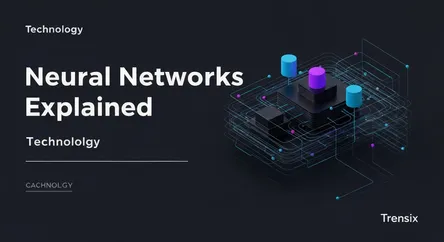Technology
Neural Networks Explained

Discover what neural networks are, how these AI models mimic the human brain to learn from data, and why they are revolutionizing modern technology.
What is it?
A neural network is an AI model inspired by the human brain, designed to recognize patterns. It consists of interconnected nodes, or 'neurons,' arranged in layers: an input layer receives data, hidden layers process it, and an output layer produces the result. The network learns by analyzing training examples and adjusting the strength of the connections between neurons. This process allows it to make predictions or decisions on new data without explicit programming. They form the bedrock of deep learning, a more advanced subset of machine learning.
Why is it trending?
The surge in neural network popularity is fueled by two key factors: data and power. The explosion of "big data" provides the vast amount of information required to train them effectively. Concurrently, advancements in computing, especially with GPUs, have provided the raw power needed to process these complex models efficiently. Their incredible success in solving previously intractable problems—from image recognition to natural language understanding—has made them a central focus of AI research and commercial application, driving innovation across the tech industry.
How does it affect people?
Neural networks are deeply integrated into daily life. They power the facial recognition on your smartphone, curate your social media feeds, and translate languages in real-time. In critical sectors, they assist doctors in diagnosing diseases, help financial institutions detect fraud, and are the core intelligence behind autonomous vehicles. Essentially, they are the engine making our devices smarter and services more personalized, automating complex tasks and creating new possibilities that were once the domain of science fiction.